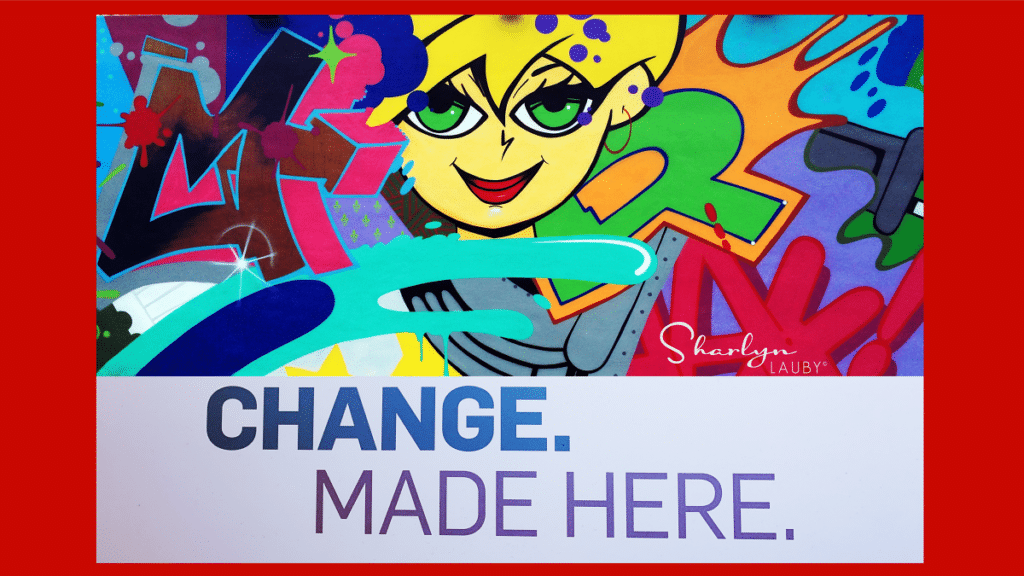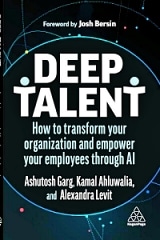Estimated reading time: 7 minutes
A few weeks ago, I published an article about how Organizations Need an Artificial Intelligence Strategy. The conversation about artificial intelligence (AI) is growing and organizations need to think about when and how they want to use this powerful tool.
One of the most talked about ways of using AI is with our workforce. But as I just mentioned, AI is a powerful tool, and I think it’s important to understand its capabilities before just jumping out there. My friend and colleague Alexandra Levit has recently authored a book titled Deep Talent: How to transform your organization and empower your employees through AI. You might remember Alexandra from our season one podcast on career durability. One of the things I loved about “Deep Talent” was the connection to careers, so I asked Alexandra if she would share with us her thoughts on AI. Thankfully, she said yes.
Alexandra, congratulations on your new book! One of the things that I enjoyed about “Deep Talent” was the focus on AI and internal mobility. I think sometimes we forget that internal mobility is an important aspect of the recruiting function. How do you see organizations being able to use AI in the course of let’s say job postings and job bidding?
[Levit] At most organizations, internal mobility is limited to posting jobs in house (which most people don’t see) before sourcing from the outside. But especially in large organizations where matches across departmental lines are less evident, the path to a desirable internal move is unclear.
This is too bad, because people often quit for new challenges, and sometimes those people who quit might have found those challenges in the form of open jobs in their own companies! AI can solve for this easily. It breaks down a person’s profile and history into skills, suggesting how the company might redeploy those skills. It can prompt a hiring manager to think, ‘this may be the job they do well, but is there a way to put their skills to work for us elsewhere?’ If they have an open requisition, deep learning can show them if there’s a matching employee within the company – perhaps in a division the manager never thought about.
AI can break individual employee skills and experience into capabilities and encourage curious employees to view internal roles that are a match for those capabilities. Maybe the new role is appropriate now, or perhaps it’s aspirational. If the latter, deep learning can guide employees in pursuing coursework or training to prepare sufficiently for that role.
Let’s say an employee sees an internal role open in the finance department. AI can see that their skills are a good match, but they’d be a stronger match if they took a tax-related course unique to that company’s industry. That employee then knows how to move from job A to job B, and even find the right course in the company’s learning management system.
When we talked on The HR Bartender Show about career durability, we discussed upskilling and reskilling as a couple of the essential components to a good internal mobility strategy. Can AI help with talent development? And if so, how can HR best utilize it?
[Levit] Even if the current job market could support it, it would be difficult to maintain the hiring pace needed to source emerging skills from the outside. AI can help organizations determine where to upskill, reskill, and cross-skill employees to make the most of their existing skill set and interests, fill gaps in the current repertoire, and be adequately prepared for the near-future direction the organization needs to take. Using custom, AI-driven recommendations, the fabric of every employee’s day can be woven with opportunities to take in-person and virtual coursework, acquire certifications and badges, and train on the job via project-based assignments, apprenticeships, and tours of duty.
Not everyone has equal access to technology. Do organizations need to consider lack of accessibility when developing future technology strategies? If so, is there anything they should consider doing to help bridge the technology gap?
[Levit] Yes, and even a basic level of technical sophistication must not be taken for granted. With any AI implementation, a robust change management strategy is prudent. After all, AI tools are still relatively new to the 2023 workplace, whereas many of the old methods have been used for more than a century.
For a new implementation to work, employees need to actually have access to and use the tool, and this requires them to change their habits. This won’t happen on its own, however. Your formalized change management strategy might include a town hall presentation discussing the rationale for the new technology, an intranet dedicated to commonly asked questions, bespoke user training, and written pieces highlighting success stories.
I know a lot of people are playing around with ChatGPT right now. How can I – individually – use technologies like ChatGPT to learn and advance my career?
[Levit] Experiment! But please, please, please, don’t let ChatGPT – or any other AI bot – take over a part of your job without properly overseeing what it’s doing. Remember that these technologies do not yet possess human-level intelligence and cannot be expected to perform your job as well as you do. This may sound obvious, but I have public relations people using Chat GPT to pitch my Wall Street Journal column without first reading the emails composed by the bot. Spoiler alert: they don’t make any sense.
There appears to be a strong race for AI dominance in the business space. I’m seeing lots of articles basically saying that AI is the answer for everything. Should we look at those claims skeptically or fully embrace the future?
[Levit] Overall, I think this is a promising time to be a human worker. Technologies exist that free us from a lot of the mind-numbing, administrative work of the past and allow us more time to be strategic and creative. However, a degree of skepticism is important. Whenever you insert an AI tool into a traditionally human driven process, you still need a human involved to manage it, fix it when it breaks, figure out if it needs to be redeployed, and explain its role and data to decision-makers. There is no such thing (or shouldn’t be) as ‘set and forget’ with automation. If you go down this road, there are likely to be unpleasant legal and non-legal consequences.
Last question. With all the talk about AI right now, organizations that want to start exploring AI might be saying to themselves, “Where do I start?” What would you say to them?
[Levit] Well, AI can be used in a variety of ways, so for the purpose of this discussion, let’s focus on talent intelligence, or the role of AI in the talent sphere. A talent intelligence platform is definitely an investment that requires executive sponsorship. Like many investments, its costs are felt immediately, while its benefits lie in the future. Consequently, not everyone on a company’s leadership team may be immediately comfortable with embracing this technology – especially because it’s so new.
When asked to invest in any new technology, the natural question from would-be executive sponsors is: “What’s in this for us?” Thus, the natural first step is to clearly communicate the benefits of high-quality talent intelligence to your sponsors, which include:
- Accelerates and scales hiring
- Reduces recruiting and media spend costs (e.g., job boards, etc.)
- Improves the candidate experience
- Supports quality of hire and diversity, equity, and inclusion goals
- Increases net promoter scores (NPS) for candidates and employees
- Increases internal hires and employee retention
- Conserves resources by using fewer point solutions (i.e., tool rationalization)
A HUGE thanks to Alexandra for sharing her expertise with us. You can pick up a copy of “Deep Talent” on Amazon. I see this book being an essential resource for organizations as they consider AI technologies and look to implement them in the workforce. And be sure to subscribe to Alexandra’s blog, Water Cooler Wisdom.
Artificial Intelligence isn’t going away, in fact, I think we will continue to have more conversations about its capabilities. As Alexandra said, there are benefits to organizations and individuals in reducing administrative work. But organizations should put some dedicated thought and planning into the role that AI will play in their operation.
Image captured by Sharlyn Lauby while at the Wynwood Art District in Miami, FL
The post Artificial Intelligence Can Empower Your Employees appeared first on hr bartender.





0 Commentaires